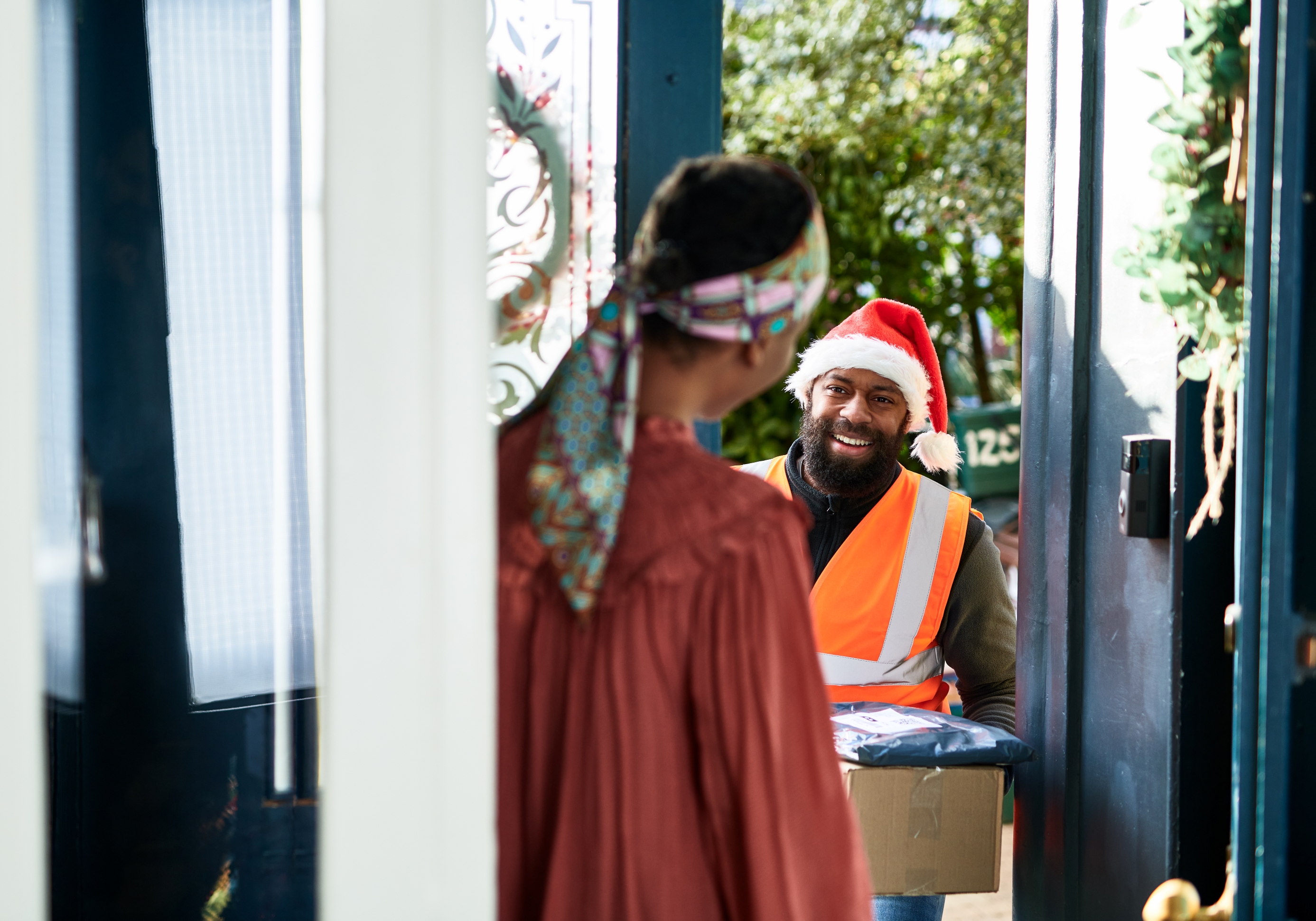Stock Market Today: Dow Rises 854 Points From Its Intraday Low
If there's one thing markets hate, it's uncertainty. But uncertainty is all they're getting these days.



Stocks fell deeper into tariff despair at Monday's opening bell but started to climb early in the final trading session of the first quarter. It's D-day minus two, and investors, traders and speculators are still trying to get their heads around the implications of President Donald Trump's so-called Liberation Day.
At the closing bell, the Dow Jones Industrial Average was up 1% at 42,001, the S&P 500 added 0.6% at 5,611, and the Nasdaq Composite was off 0.1% to 17,299. While mixed today, all three indexes closed lower for the first three months of 2025.
The S&P 500 shed 4.6% from January to March to end a five-quarter winning streak. The Nasdaq lost 10.6% for the quarter, the Dow 1.2%.
From just $107.88 $24.99 for Kiplinger Personal Finance
Become a smarter, better informed investor. Subscribe from just $107.88 $24.99, plus get up to 4 Special Issues

Sign up for Kiplinger’s Free Newsletters
Profit and prosper with the best of expert advice on investing, taxes, retirement, personal finance and more - straight to your e-mail.
Profit and prosper with the best of expert advice - straight to your e-mail.
The Wall Street Journal reported on Sunday night that the administration "is scrambling to determine the specifics of its new tariff agenda ahead of its self-imposed deadline of Wednesday, weighing options as the president has promised to remake the American economy with a swath of new levies."
President Trump has promised to use both reciprocal and industry-specific tariffs. Ideas include an across-the-board levy of up to 20% on basically all U.S. trading partners effective April 2 as well as 25% levies on automobiles and car parts effective April 3.
Canada and Mexico, the U.S.'s biggest trading partners, are considering retaliatory measures.
"April 2 has long been circled on investors' calendars," writes Michael Zezas, the global head of fixed-income research at Morgan Stanley. Zezas notes that beyond "fairer trade" as the goal and "reciprocity" as the governing principle, "little is known about what this policy will entail.
"This isn't exactly reassuring to investors we talk to," he observes. They're "perplexed by the dynamic of tariff announcements, negotiations, delays, and shifting levels of implementation for Mexico, Canada, China, and some key products."
Zezas is waiting until Wednesday to answer two questions. No. 1 is, "Do the announcements clarify tariff policy, turning it from an unknown to a known?" No. 2 is, "Are the tariff increases large enough to further erode the economic outlook?"
Economics and earnings
Goldman Sachs Chief Economist Jan Hatzius now sees a 35% probability the U.S. economy enters a recession during the next 12 months. That's up from 20% on March 7.
The upgrade reflects a "lower growth baseline, the sharp recent deterioration in household and business confidence, and statements from White House officials indicating greater willingness to tolerate near-term economic weakness in pursuit of their policies."
This week's economic calendar is highlighted by the release of the March jobs report on Friday at 8:30 am Eastern Standard Time.
Goldman Sachs Chief U.S. Equity Strategist David Kostin cited "higher tariffs, weaker economic growth, and greater inflation" as he lowered his 12-month S&P 500 return forecast to 6% from 16%. That suggests a year-end level of 5,900 for the broad-based index.
Kostin cut his S&P 500 earnings per share (EPS) growth forecast to 3% from 7% for 2025 and to 6% from 7% for 2026. According to Kostin, "Slowing growth and rising uncertainty warrant a higher equity risk premium and lower valuation multiples for equities." Kostin's forecasts are lower than consensus estimates for the S&P and for earnings growth.
According to John Butters of FactSet, the consensus prediction among analysts is that the S&P 500 will rise 21.3% over the next 12 months. The calculation is based on "the difference between the bottom-up target price and the closing price for the index" as of March 27.
Analysts expect tech stocks (+30.4%), consumer discretionary stocks (+27.0%) and communication services stocks (+25.1%) to lead the way higher from here.
Consumer staples stocks (+11.1%), energy stocks (+12.0%) and financial stocks (+12.2%) will lag among the 11 S&P 500 sectors.
"It is interesting to note," Butters writes, "that while the price of the S&P 500 has declined by 4.4% since the end of February, the bottom-up target price has decreased by only 0.5% during this same period."
The question on Butters' mind is whether analysts are "waiting for the upcoming earnings season to revise their company-level target prices."
It's a quiet week on the earnings calendar. Things will pick up next Friday, April 11, when JPMorgan Chase (JPM), Morgan Stanley (MS) and Wells Fargo (WFC) report first-quarter results.
CRWV and AI
It's the biggest initial public offering (IPO) of the year so far, and AI-focused cloud computing platform CoreWeave (CRWV) has failed to meet expectations.
That's despite the fact that Nvidia (NVDA), the leader of the AI revolution, bought $250 million of CRWV at the IPO price.
As Renaissance Capital details in its weekly IPO report, CRWV shares were priced "well below the range to raise $1.5 billion at a $22.4 billion market cap," traded flat on Friday and sank 7.3% on Monday.
"The company grew revenue more than 8-fold from a year earlier to $1.9 billion in 2024," RenCap notes, "and has signed multi-year multi-billion dollar contracts with leading names such as Microsoft and OpenAI."
Microsoft (MSFT) accounted for more than 60% of CoreWeave's revenue last year, and capital-intensive infrastructure investments leave it with "a large negative free cash flow."
"There's a lot of headwinds in the macro," said CEO Michael Intrator on CNBC. "And we definitely had to scale or rightsize the transaction for where the buying interest was."
NVDA was down 1.2% on Monday, while MSFT lost 0.9%.
Related content
- The 5 Safest Vanguard Funds to Own in a Volatile Market
- The Best Energy ETFs to Buy
- Six of the Best Target-Date Funds to Buy Now for Your Retirement
Profit and prosper with the best of Kiplinger's advice on investing, taxes, retirement, personal finance and much more. Delivered daily. Enter your email in the box and click Sign Me Up.

David Dittman is the former managing editor and chief investment strategist of Utility Forecaster, which was named one of "10 investment newsletters to read besides Buffett's" in 2015. A graduate of the University of California, San Diego, and the Villanova University School of Law, and a former stockbroker, David has been working in financial media for more than 20 years.
-
 Nasdaq Sinks 418 Points as Tech Chills: Stock Market Today
Nasdaq Sinks 418 Points as Tech Chills: Stock Market TodayInvestors, traders and speculators are growing cooler to the AI revolution as winter approaches.
-
 23 Last-Minute Gifts That Still Arrive Before Christmas
23 Last-Minute Gifts That Still Arrive Before ChristmasScrambling to cross those last few names off your list? Here are 23 last-minute gifts that you can still get in time for Christmas.
-
 The Rule of Compounding: Why Time Is an Investor's Best Friend
The Rule of Compounding: Why Time Is an Investor's Best FriendDescribed as both a "miracle" and a "wonder," compound interest is simply a function of time.
-
 Nasdaq Sinks 418 Points as Tech Chills: Stock Market Today
Nasdaq Sinks 418 Points as Tech Chills: Stock Market TodayInvestors, traders and speculators are growing cooler to the AI revolution as winter approaches.
-
 The Rule of Compounding: Why Time Is an Investor's Best Friend
The Rule of Compounding: Why Time Is an Investor's Best FriendDescribed as both a "miracle" and a "wonder," compound interest is simply a function of time.
-
 If You're a U.S. Retiree Living in Portugal, Your Tax Plan Needs a Post-NHR Strategy ASAP
If You're a U.S. Retiree Living in Portugal, Your Tax Plan Needs a Post-NHR Strategy ASAPWhen your 10-year Non-Habitual Resident tax break ends, you could see your tax rate soar. Take steps to plan for this change well before the NHR window closes.
-
 Stocks Chop as the Unemployment Rate Jumps: Stock Market Today
Stocks Chop as the Unemployment Rate Jumps: Stock Market TodayNovember job growth was stronger than expected, but sharp losses in October and a rising unemployment rate are worrying market participants.
-
 The Delayed November Jobs Report Is Out. Here's What It Means for the Fed and Rate Cuts
The Delayed November Jobs Report Is Out. Here's What It Means for the Fed and Rate CutsThe November jobs report came in higher than expected, although it still shows plenty of signs of weakness in the labor market.
-
 Your Year-End Tax and Estate Planning Review Just Got Urgent
Your Year-End Tax and Estate Planning Review Just Got UrgentChanging tax rules and falling interest rates mean financial planning is more important than ever as 2025 ends. There's still time to make these five key moves.
-
 What Makes This Business So Successful? We Find Out From the Founder's Kids
What Makes This Business So Successful? We Find Out From the Founder's KidsThe children of Morgan Clayton share how their father's wisdom, life experience and caring nature have turned their family business into a respected powerhouse.
-
 Stocks Struggle Ahead of November Jobs Report: Stock Market Today
Stocks Struggle Ahead of November Jobs Report: Stock Market TodayOracle and Broadcom continued to fall, while market participants looked ahead to Tuesday's jobs report.